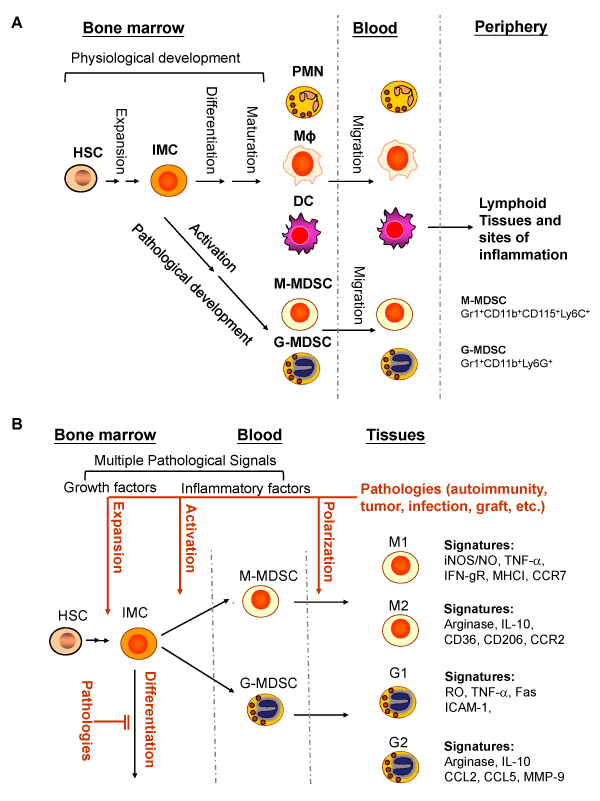
 |
| Figure 2: Multiple Steps in the Development of Myeloid Cells and MDSC. (A) In physiological conditions, hematopoietic stem cells (HSC) undergo a series of expansion, differentiation, and maturation in bone marrow. Mature myeloid cells migrate to the periphery via blood vessels and replenish peripheral pool of myeloid cells. In pathological conditions, mediators of pathologies deter and divert normal HSC development to pathological development, distinguished by an increase of IMC expansion and activation. These immature myeloid cells, i.e., MDSC, migrate to the peripheral lymphoid tissues and sites of inflammation. MDSC can be categorized into two subsets, monocytic (M)-MDSC and granulocytic (G)-MDSC, by their markers (CD11b, Ly6C and Ly6G) and suppressive activities (20, 33, 36). (B) The inflammatory mediators of pathologies can regulate three developmental stages of MDSC from expansion to activation and polarization. In terms of polarization, these mediators dictate MDSC subsets to skew into M2 M-MDSC and G2 G-MDSC. Polarized MDSC subsets can be distinguished by a distinct set of signature genes in relation to their functions. M2/G2 cells produce arginase, anti-inflammatory cytokines and chemokines, eventually converging to the establishment of immune tolerance (and pro-tumoral activities). In marked contrast, M1 and G1 cells produce iNOS, NO, inflammatory cytokines and chemokines, leading to their immunogenic effects (and tumoricidal activities). Whether MDSC polarization is an irreversible process or a reversible hyperactivation state remains elusive (34). |